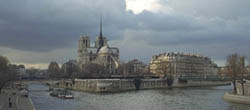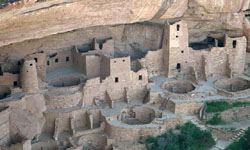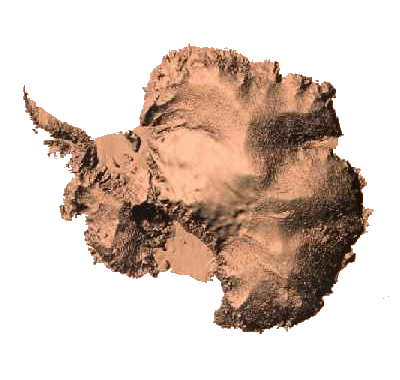Antarctica

A Complete Guide to its History, People, Cities and Culture



Photo Credits, top to bottom: Delphia, the city where visitors first arrive on the continent; Semei, on the northeast coast of Antarctica, known for its seafood, computer language industry and telekinesis experiments; Balloonists pass above the green hills surrounding Delphia, on their way back to the city; Detail of the ruins at Mimosa, where the most famous battle in Antarctican history occurred in 1403 B.C.
BUY MY BOOKS | HOME | FICTION | ESSAYS | ON-LINE DIARY | MARGINALIA | GALLERY | INTERACTIVE FEATURES | FAQ | SEARCH ENGINE | LINKS | CONTACT
www.ralphrobertmoore.com
the official website for the writings of
ralph robert moore

Glossary
Antarctican Blue Lobster A breed of lobster native to Antarctican seas which has thicker sidelegs than its Atlantic cousin, and is considered to have a sweeter, more pleasing taste.
Bean Ant Non-stinging ant native to Antarctica which builds elaborate, mathematically precise mazes aboveground, with maze walls up to a half-inch high.
Bus (pronounced boos) The original and still official language of Antarcticans, although virtually all Antarcticans also use English and, for some philosophical discussions, German. Bus is an extremely difficult language to master, in part because each word has so many different shadings of meaning. It is an oral language only; it does not exist in written form. Please see Language for more details.
Butterfly Bay Popular vacation spot on the western shore of Antarctica, home to, or overnight lodging for, thousands of butterfly species, many unique to the continent.
Buzzereet A nonfatal disease, transmitted through the bite of a palm spider, which causes the victim to have delusions that he or she does not exist. Symptoms last approximately one week.
Chula A pot roast made with beef, large quantities of horseradish, and root vegetables.
Club Bus Words in bus, of which there are very few, which only have one meaning. Please see Language for more details.
Crinkling Vocalization of a word in bus with the correct duration of sound and inflection for the meaning intended.
Day of Joy Day on January 19, 1404 B.C., when the tribes of Antarctica decided to become a nation in response to the thwarted invasion of Mimosa.
Day Meat One of two categories in which Antarcticans divide meat. Day meat refers to fowl and seafood. See also Night Meat.
Deferral A cooperative means by which young Antarcticans, and new immigrants, finance their expenses until such time as they are self-sufficient. Please see Economy for more details.
Dell Antarctican city on the eastern shore, famous for its beaches, seafood and space exploration.
Delphia The city in which visitors to Antarctica first arrive, known for its magnificent blue and green bays, gray stone buildings, surrounding emerald hills, and the colorful hot air balloons that float above.
Devo A solid gold coin which is the basic unit of currency in Antarctica. See also ruse and penny.
Elf [as the creature native to Antarctica] A cat-like monkey whose mature size ranges from one foot to one yard, found in nearly all temperate areas of the continent (they are not found outside cities in the northern extremes of the nation). Elfs, as the plural is spelled, generally walk on all fours, although they can stand on their hind legs, with grasping, opposable-thumb front paws (the rear paws are clawed; in most sub-species the front paws are clawed at birth, but the claws eventually drop off as the animal matures). Elfs come in a remarkable range of fur markings, and in this and the triangular, forward projection of their faces (as opposed to the flat faces of most simians), most clearly reveal their feline influence. Their tails are usually quite long, often as long as the length of their body, and are used for both communication and grasping. Of all the animals existing in Antarctica, the elf is considered one of the most intelligent, and most human-like, and indeed nearly all Antarcticans live with one or several elfs.
Elf [as one of the Five Concepts] Elf is the second of the Five Concepts, but very little is known about it at this point. It is believed to include, or refer to, the native Antarctican creature, Elf, but in what ways, is still unknown.
Faz Massive underground city in northern Antarctica, consisting entirely of interconnected caverns, some forty stories high, carved by water over millions of years. The caverns themselves are of a highly reflective form of rose quartz, which allows the city to be illuminated by a single candle.
Fes Circular area of common buildings often found in early Antarctican towns.
Five Concepts The Five principles which govern many aspects of Antarctican life. Very little is known about the concepts, although each apparently has a wide variety of applications, including philosophical, ethical, and physical. The first concept is nin, for which see Beliefs. The second concept is elf, but very little is known about it except for its name. The names of the other three concepts are not known at this point.
Flat and Bent A popular lunch served in many Antarctican city squares, consisting of duck breast seared in a skillet until it is just done, then thinly sliced and placed on a bed of crisp greens in a wide, chewy hard roll, moistened with several sauces, and served with a roasted duck leg on the side.
Flyer The most popular means of transportation in Antarctica. Flyers are capable of operating in the sky, on roads, and on and under water.
Full Expression Term used by outside linguists studying bus, the native language of Antarcticans, to denote the elements necessary (vocalization, word crinkling, facial expression, body stance, and hand/hand and arm gesture), to convey the sense of the word uttered.
Great Hall The oldest known man-built structure in Antarctica, located in the city of Urdz, dating back 40,000 years.
Great Hollow The immense center of the Antarctican continent, where it is claimed notisas and a number of species of dinosaur still live.
Hopes Three immense areas in the interior of Antarctica, surrounding the Great Hollow, set aside as natural habitats, and therefore not visited by Antarcticans, so that the diversity of life within each Hope may exist without human presence. Forest Hope consists of forest and grasslands, Listen Hope, of jungle and marshes, and Mountain Hope, of mountains and snowlands.
Klammerhopper A various-sized, multi-limbed machine designed to perform several tasks simultaneously. Large klammerhoppers are frequently used by Antarctican citizens to assist in the construction of their home.
Mimosa City on the Western shore of Antarctica, site of the continent's only battle, in 1403 B.C., which was to repel invading forces. All 20,000 invaders, and 600,000 Antarcticans, died in the struggle. The battle is memorialized in the world's largest sculpture, consisting of 620,000 intricately-carved life-sized statues, which fill the bay, shoreline and hills of the city. Most Antarcticans make a pilgrimage to Mimosa at least once in their lifetimes, to honor the Antarcticans who died there to keep the continent free. Please see History for more details.
Night Meat One of two categories in which Antarcticans divide meat. Night meat refers to pork, beef, veal, lamb and game other than fowl, except that any night meat that is smoked or brined is then considered to be a day meat. See also Day Meat.
Nin One of the Five Concepts. Nin apparently holds as one of its aspects the idea of "absence [end], which by its absence [end], creates [makes more significant][deceives] possibilities [truths][broadenings or expansions]." "Deceives" is sensed to not have a negative connotation in the context of the translation. In one of its physical manifestations, nin refers to the idea of invisibility as it was practiced by Antarcticans while they traveled abroad over the eons prior to the revelation of the "true" Antarctica. In that aspect, nin translates roughly as "being where the other [where the other's attention] is not". Antarcticans achieved invisibility during travels abroad not by actually being invisible, but by remaining outside the vision field of anyone who might see them. For example, an Antarctican might be in a room where there is also another person, but not be seen by that person simply because the Antarctican, with the extraordinary adeptness of their race, always remains behind the person's back. "Not invisible, but not see-able, and therefore not visible," as it's sometimes expressed. (It should be added that the practice of this particular physical aspect of nin, being invisible among others, was done only as a means of self-defense, and is not done today, other than as a physical exercise among Antarcticans).
Notisas The ancient race Antarcticans are descended from, a race which Antarcticans state still exists in the Great Hollow. Please see Fauna for more details.
Oyster Not to be confused with the non-Antarctican term for a mollusk. An oyster is a large, square skillet made of cast iron, the left two thirds of which is a flat cooking surface with a slight border, and the right third of which is comprised of three equal-sized, square cooking wells. It is the most popular cooking utensil in Antarctica.
Palm Spider The only dangerous animal in Antarctica, found only in the Qualye region, a small, dense rain forest of approximately one hundred square miles located inland from the southeastern shore of Antarctica. The spiders live high up in the xitaxis, a member of the Palmae family unique to Antarctica, with arborescent habit, and drop on people as they pass under the tree, scurrying off their heads down their arm to their hand, where they place a venomous bite in the palm. Although the individual bitten is unaffected, he or she then becomes a carrier for buzzereet, the disease spread by the palm spider's saliva. The first person the host individual comes in contact with who touches the wound contracts buzzereet. If the host avoids having his palm come in contact with any other person for six months, the virus dies and the disease is no longer transmittable. People avoid the palm spider by simply not visiting the small, remote region to which it is confined.
Penny The smallest unit of currency in Antarctica, made of silver, equal to one-twelfth the value of a ruse. See also devo.
Ruse A unit of currency, made out of treated pyrite, which is one-twelfth the value of a devo. See also penny.
Spatendunk Bus term for beer.
Splash steaming A popular method of cooking.
Suh Seaside city composed entirely of huge statues in which the citizens live and work.
Two Worlds Fiction The form fiction takes in Antarctican literature, in which the writer creates a false world which is juxtaposed upon the 'real' world. Most Two Worlds Fiction is concerned with solving a mystery, not in the sense of a crime, but rather in the sense of an anomaly created by the writer.
Uakti The native music of Antarctica, known for its complex rhythms and melodies. One must often listen to a uakti piece dozens of times before beginning it grasp its sense. Uakti is entirely instrumental. Antarctican music generally does not include vocalizations.
Ubu Antarctican disease which temporarily weakens the person afflicted.
Urdz The oldest city in Antarctica, dating back 40,000 years, built from glaciers and quartz, and site of the Great Hall.
Val A region of Antarctica usually visited by Antarcticans only once or twice in their lives, where the trees supposedly grow so closely together one must inch carefully around them, and where, so Antarcticans claim, live a variety of animals, some quite ordinary, others less so, that speak.
Walk In Antarctican custom which appears to be part of the initiation process for the young. Please see People for more details.
Wem A salt water fish believed to be the only fish native to Antarctica. It grows up to a foot and a half in length, has no scales, and is boneless (its head is encased in cartilage). When cooked, wem changes from a pearly gray to pure white, and becomes slightly springy.
Withung A sleeping disease which causes the person to gradually, over several months or years, spend more and more of their time in a sleep state; the chief cause of death in Antarctica, usually occurring around the age of 140.
Wohui The bus word for "Antarctican".
Wohum The bus word for "Antarctica".
print this article